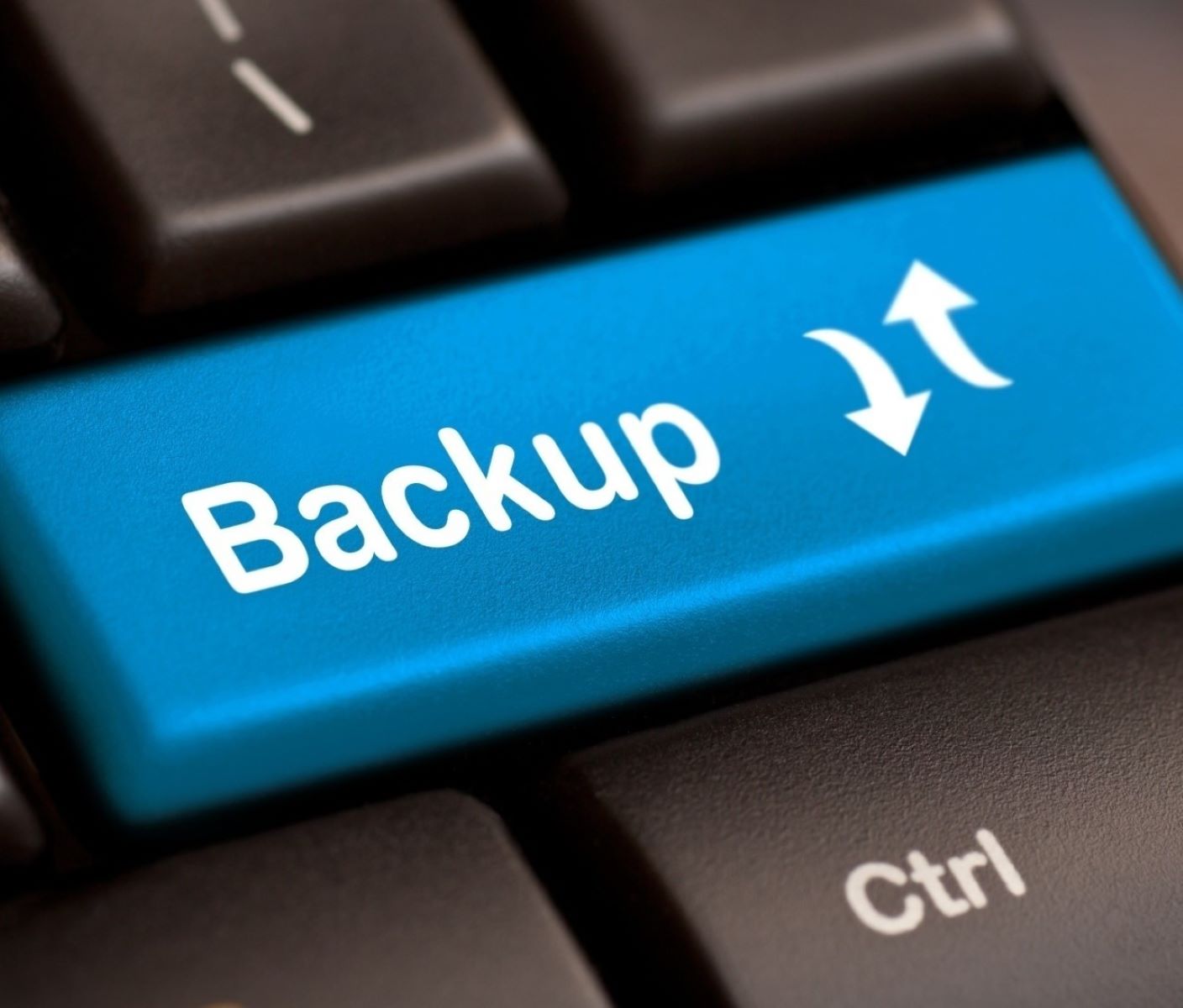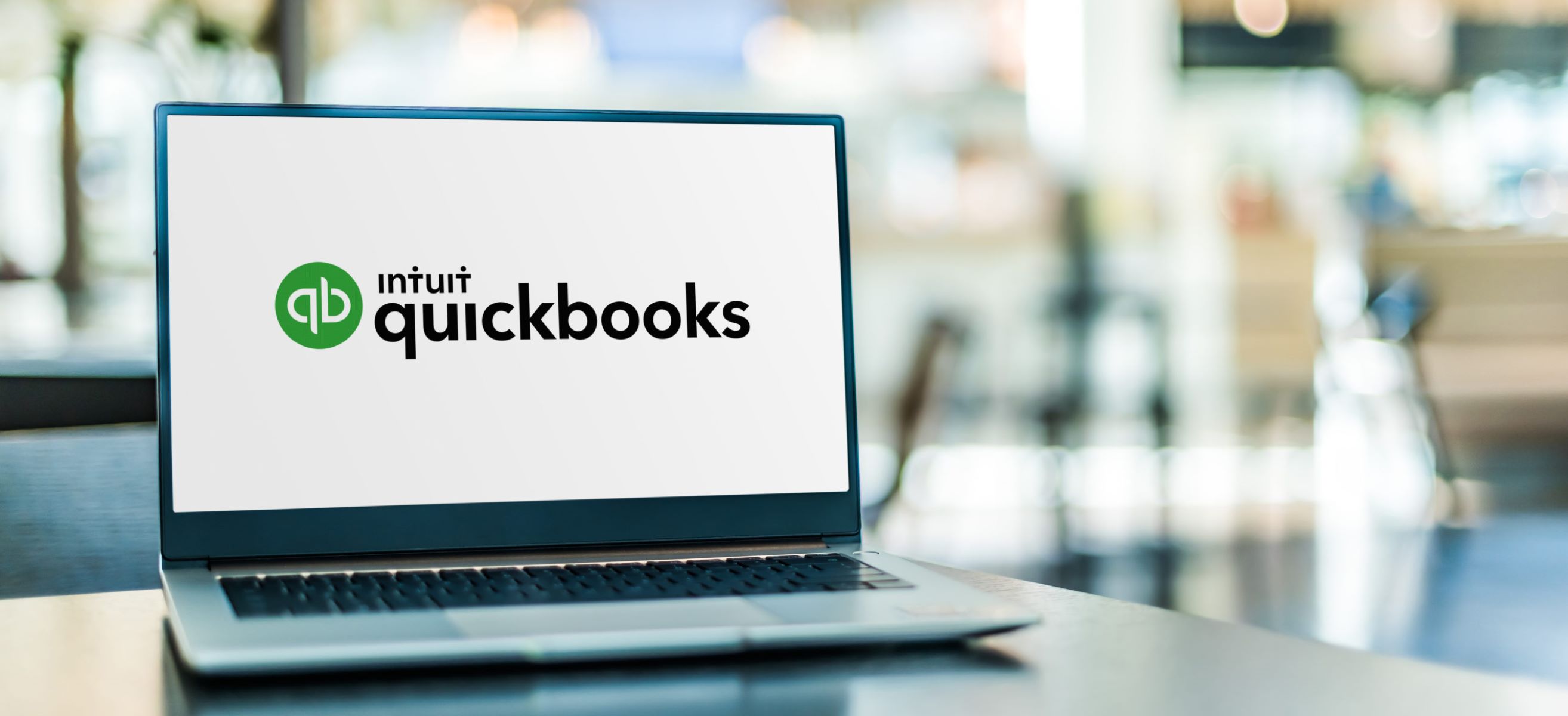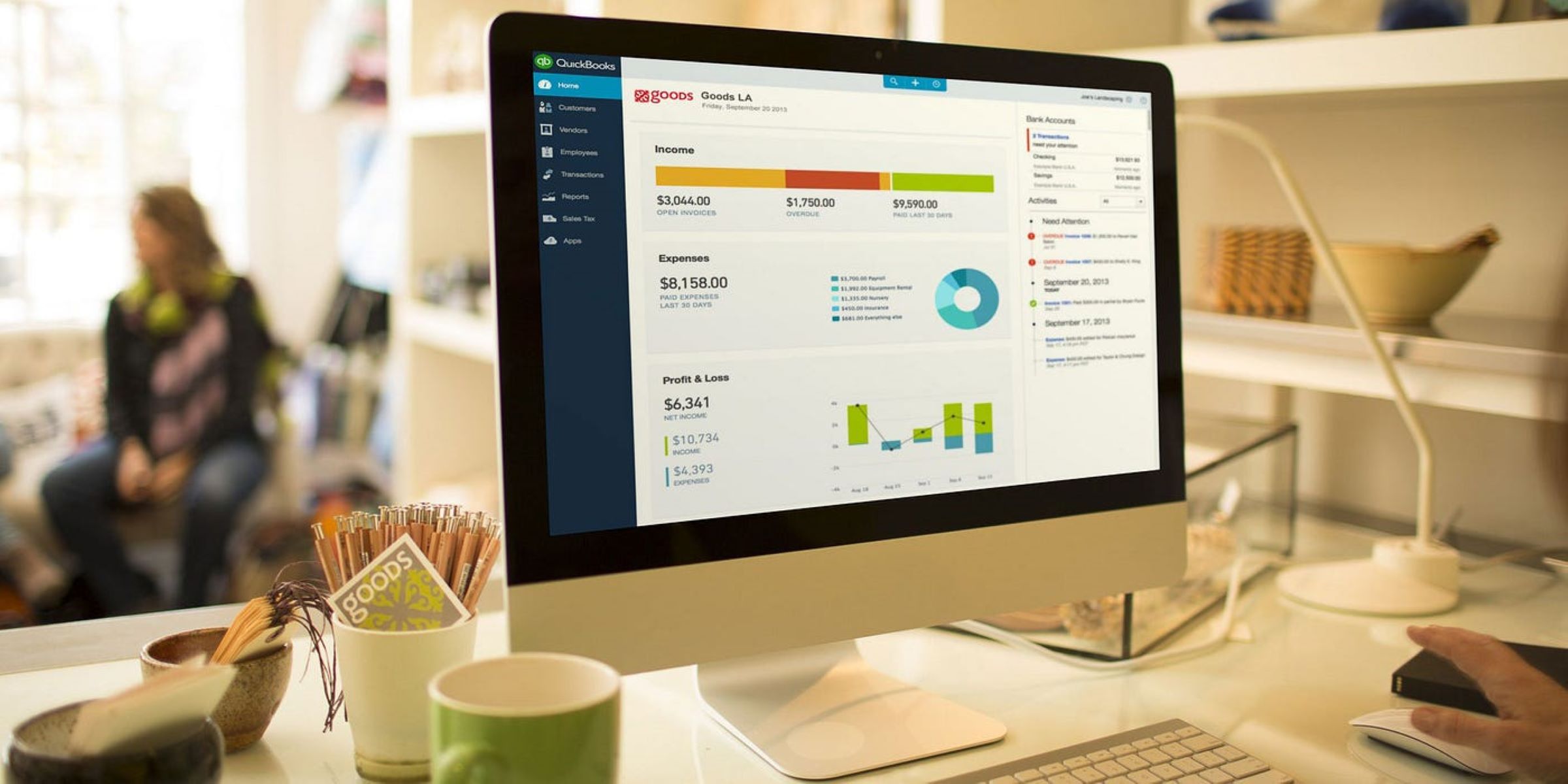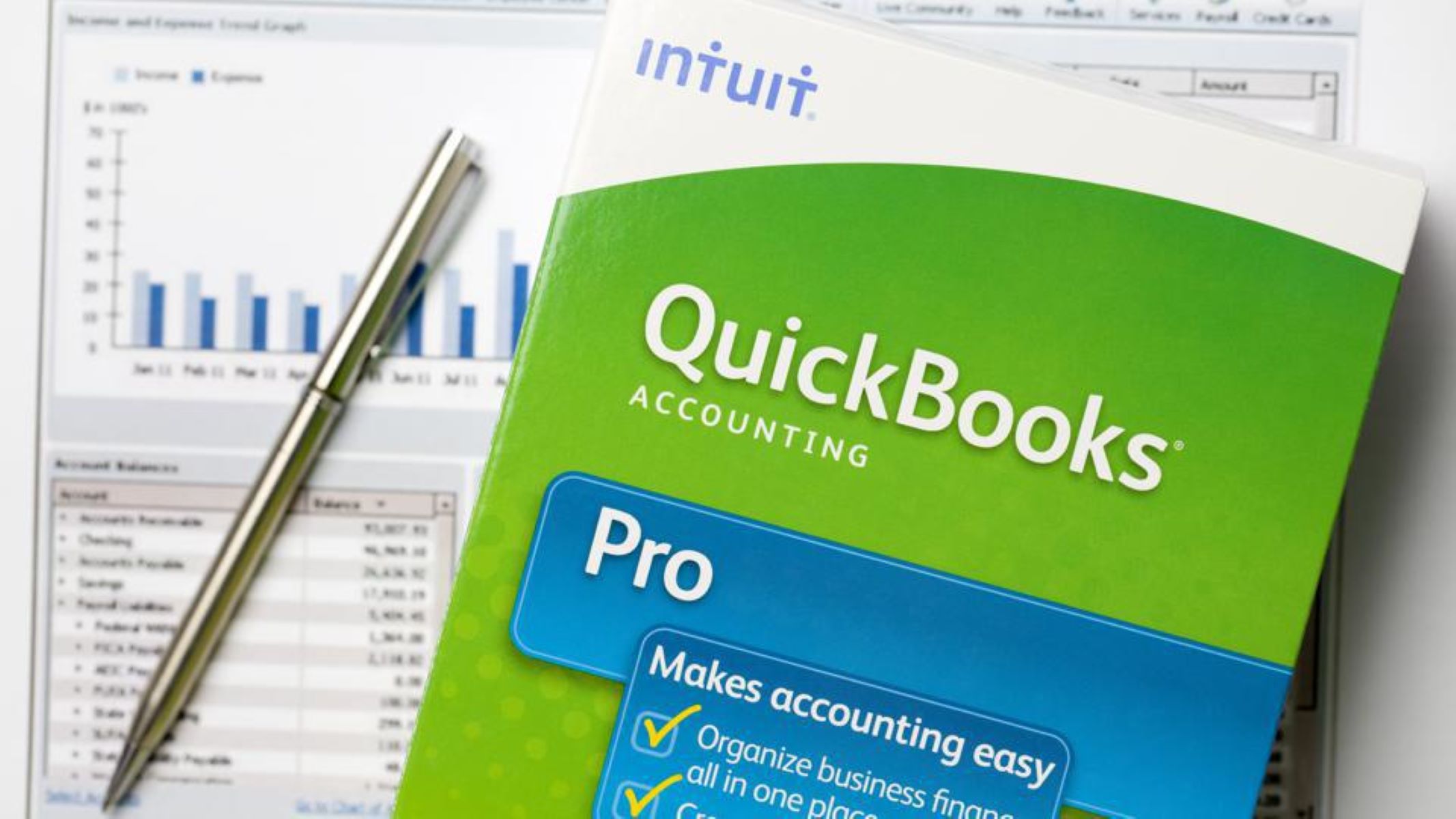Introduction
Welcome to the world of QuickBooks Desktop – a comprehensive accounting software that helps businesses manage their financial operations efficiently. As an essential tool for businesses of all sizes, it is crucial to keep your QuickBooks data safe and secure. One of the most important steps you can take to protect your financial information is by regularly backing up your QuickBooks Desktop files.
Imagine losing all your financial data due to a computer crash, power outage, or any other unforeseen circumstance. The repercussions would be devastating, both in terms of time and money. That’s where creating a backup of your QuickBooks files becomes essential. By having a reliable backup system in place, you can ensure the safety of your data and avoid potential disasters.
In this article, we will explore the various reasons why you should backup your QuickBooks Desktop files and different methods to implement a backup strategy. Whether you are a small business owner or a finance professional, understanding the importance of backups and how to execute them is crucial for the smooth running of your business.
Without further ado, let’s delve into the world of backups and explore why they are vital for the security and continuity of your QuickBooks Desktop data.
Why Should You Backup QuickBooks Desktop?
Backing up your QuickBooks Desktop files is not just a best practice; it is an absolute necessity. Here are several reasons why you should prioritize regular backups:
- Data Protection: Your QuickBooks data contains critical financial information, including transactions, sales data, invoices, and customer details. Without a backup, you risk losing this valuable data in the event of a system failure, hardware malfunction, or even a cyber-attack. By having a backup, you can quickly restore your files and minimize the impact of data loss.
- Disaster Recovery: Accidents happen, and disasters such as fires, floods, and theft can lead to the loss of your computer or server. In such situations, without a backup, recovering your financial data can be challenging, if not impossible. Regular backups ensure that you have a recent copy of your QuickBooks files that can be easily restored to get your business up and running again.
- Compliance and Legal Requirements: Depending on your industry, you may be required to retain your financial records for a specific period. Backing up your QuickBooks files helps you meet these compliance and legal obligations. It also provides you with a historical record that can be useful for audits and tax purposes.
- Efficient File Transfer: Backing up your QuickBooks files allows you to transfer your data to another computer or location with ease. If you’re upgrading to a new computer or need to work from a different location, having a backup ensures a smooth transition without any data loss or interruption to your business operations.
- Peace of Mind: Knowing that your financial data is safely backed up provides peace of mind. It eliminates anxieties surrounding data loss and allows you to focus on your core business activities without worrying about potential disasters or technical glitches.
By understanding the importance of backing up your QuickBooks Desktop files, you can take the necessary steps to protect your valuable financial data. With a reliable backup system in place, you can ensure the continuity of your business operations and minimize the risks associated with data loss.
Understanding QuickBooks File Types
Before we dive into the different methods of backing up your QuickBooks Desktop files, it is important to understand the various file types associated with QuickBooks. By familiarizing yourself with these file types, you can better comprehend the backup process and choose the appropriate method for your needs.
Here are the main file types you’ll encounter when working with QuickBooks:
- .QBW: This is the primary file type in QuickBooks. The QBW file contains all of your financial data, including transactions, accounts, and settings. It is essential to back up this file regularly to ensure the safety of your financial records.
- .QBB: A QBB file is a QuickBooks backup file. It is a compressed version of the QBW file and includes all the data and settings needed to restore your company file. You can think of it as a complete snapshot of your QuickBooks data at a specific point in time.
- .QBM: The QBM file type is similar to the QBB file, but it is a portable company file. It is a smaller file size that allows for easier transfer and is commonly used for sending your company file to others or creating a portable backup for temporary storage.
- .QBX: A QBX file is a type of export file that you can create when you want to send your company file to your accountant or another user who uses a different version of QuickBooks. The recipient can then convert the QBX file into their version of QuickBooks.
- .QBY: The QBY file is another type of export file that is used for importing transactions, such as invoices or bills, into your company file. It allows you to transfer data from one QuickBooks company file to another.
These are the main QuickBooks file types that you will encounter during the backup and restore process. Understanding the purpose of each file type will help you make informed decisions when it comes to creating backups and transferring data.
Now that you have a good understanding of QuickBooks file types, let’s explore the different methods you can utilize to backup your QuickBooks Desktop files and ensure the safety of your financial data.
Different Ways to Backup QuickBooks Desktop
When it comes to backing up your QuickBooks Desktop files, there are several methods you can choose from. The right approach for you will depend on factors such as your business needs, budget, and level of technical expertise. Let’s explore four common ways to backup QuickBooks Desktop:
- Manual Backup: One straightforward method is performing a manual backup by simply copying and pasting your QuickBooks company files to a separate location. This can be a USB drive, an external hard drive, or a network drive. While this method is simple and accessible to all users, it requires you to remember to create backups regularly. Without a schedule or automated process, there is a risk of forgetting to backup your files, leaving your data vulnerable.
- Scheduled Backup: To ensure regular backups without relying on manual intervention, QuickBooks offers a built-in feature known as “Scheduled Backup.” With this feature, you can set up automatic backups at specific intervals, such as daily, weekly, or monthly. QuickBooks will create backups of your company files according to your schedule and store them in a designated folder or location. This method provides convenience and peace of mind, as you can rely on the software to handle backups automatically.
- QuickBooks Backup Manager: QuickBooks also provides a dedicated tool called “QuickBooks Backup Manager.” This tool offers more advanced options for managing and organizing your backups. It allows you to schedule automatic backups and customize settings, such as the number of backup copies to retain and the locations where backups are stored. The Backup Manager ensures enhanced control and flexibility when it comes to backing up your QuickBooks files.
- Online Backup Services: Another popular option is to use online backup services. These services provide secure cloud storage where you can store your QuickBooks backups. By utilizing online backup services, you can benefit from offsite storage, ensuring that your data is protected even in the event of physical damage to your computer or local storage devices. Online backup services often offer features like automatic backups, version history, and data encryption, making them a reliable and convenient choice for securing your QuickBooks files.
Each backup method has its own benefits and considerations. Consider your business requirements, risk tolerance, and budget when deciding which approach is most suitable for you. It is important to regularly test your backups to ensure they can be successfully restored, as unreliable backups can be as ineffective as not having backups at all.
In the next section, we will explore the process of restoring your QuickBooks files from a backup, so stay tuned!
Manual Backup
One of the simplest and most accessible methods to backup your QuickBooks Desktop files is by performing a manual backup. This method involves manually copying your QuickBooks company files to a separate location, such as a USB drive, external hard drive, or network drive. While it may not be the most automated approach, a manual backup gives you direct control over the backup process. Here’s how you can create a manual backup:
- Locate Your QuickBooks Company Files: Open QuickBooks Desktop and navigate to the File menu. Select “Open or Restore Company” and choose “Open a company file.” Browse to find the location of your QuickBooks company file (.QBW) that you want to back up.
- Create a Backup Copy: Once you have located your company file, make a copy by right-clicking on the file and selecting “Copy” from the context menu. Then, navigate to the destination where you want to store the backup, such as a USB drive or external hard drive, and right-click on the destination folder. Choose “Paste” to create a copy of the QuickBooks company file in the backup location.
- Repeat for Supporting Files: In addition to the QBW file, QuickBooks may have additional supporting files, such as transaction logs, network data files, or templates. It’s important to back up these files as well. Locate the associated files in the same directory as your company file and copy them to the backup location along with the QBW file.
- Label and Store Your Backup: To keep your backups organized, it’s essential to label them appropriately, indicating the date and time of the backup. This will help you differentiate between multiple backups and easily identify the most recent copy when needed. Store the backup in a safe and secure location, preferably separate from your computer, to protect against physical damage or loss.
Remember to repeat this manual backup process regularly to ensure that your QuickBooks data is consistently protected. It’s recommended to set a schedule, such as weekly or monthly, to keep backups up to date and avoid data loss.
While performing manual backups provides you with control over the process, it is important to note that it requires diligence and can be time-consuming. If you prefer a more automated and convenient backup solution, consider utilizing QuickBooks’ built-in Scheduled Backup feature or exploring other backup methods such as QuickBooks Backup Manager or online backup services.
In the next section, we will explore the process of scheduling automatic backups using QuickBooks’ built-in feature, so stay tuned!
Scheduled Backup
To ensure that your QuickBooks Desktop files are regularly and automatically backed up, QuickBooks offers a convenient built-in feature called “Scheduled Backup.” With this feature, you can set up automatic backups at specific intervals, such as daily, weekly, or monthly. This method eliminates the need for manual backups and provides you with peace of mind knowing that your data is protected. Here’s how you can schedule automatic backups in QuickBooks:
- Open QuickBooks Preferences: Launch QuickBooks Desktop and navigate to the “Edit” menu. Choose “Preferences” from the dropdown list.
- Select Backup Preferences: In the Preferences window, click on “Backup” in the left-hand menu to access the backup settings.
- Customize Backup Settings: In the Backup preferences, you can configure various settings to tailor the backup process to your needs. Choose the desired backup interval (daily, weekly, or monthly), and specify the time for the backup to occur. You can also set the number of backup copies to retain and choose a backup location.
- Choose Backup Location: To specify the backup location, click on the “Browse” button and navigate to the desired folder or external drive where you want to save your backups. It is recommended to store the backups in a location separate from your QuickBooks company files for added security.
- Review Other Settings: In the Backup preferences, you can also enable options like verifying data integrity before backup, disabling backup reminders, and setting password protection for backup files. Customize these settings based on your preferences and requirements.
- Save Backup Schedule: Once you have configured the backup settings, click on “OK” to save the changes. QuickBooks will now automatically create backups of your company files according to the schedule and location you specified.
Utilizing the Scheduled Backup feature ensures that you have regular and up-to-date backups without the need for manual intervention. It is a convenient way to protect your critical financial data and minimize the risk of data loss. Remember to periodically check your backup files to ensure that they are being created successfully and are retaining the necessary data.
In addition to scheduling backups within QuickBooks, it is also a good practice to periodically verify and test your backups by restoring them to ensure their integrity and reliability. This step ensures that you can restore your data in the event of a system failure or data loss.
In the next section, we will explore another backup method using QuickBooks Backup Manager, so keep reading!
QuickBooks Backup Manager
QuickBooks Backup Manager is a dedicated tool offered by QuickBooks that provides additional features and flexibility for managing and organizing your backups. It allows you to schedule automatic backups, customize backup settings, and have more control over the backup process. Here’s how you can utilize QuickBooks Backup Manager to backup your QuickBooks Desktop files:
- Access QuickBooks Backup Manager: Launch QuickBooks Desktop and navigate to the “File” menu. Choose “Backup” and then select “Create Local Backup” to open QuickBooks Backup Manager.
- Select Backup Options: In QuickBooks Backup Manager, you can choose from various backup options to customize the backup process. You can select between “Online” and “Local Backup” options, specify the location where you want to save the backup, and set a backup schedule. Additionally, you can choose to include or exclude certain files and folders from the backup.
- Customize Advanced Options: QuickBooks Backup Manager also provides advanced options to further refine your backup settings. You can choose a backup type (full or incremental), set file compression options, specify the number of backups to keep, and configure encryption settings for added security.
- Review and Save Backup Settings: Once you have customized the backup options and advanced settings, review the summary of your backup settings. Ensure that all the settings are as per your requirements. Click on “Next” to save the backup settings and proceed to the next step.
- Run the Backup: In the final step, QuickBooks Backup Manager will create a backup of your company files based on the scheduled backup settings and location you specified. You can monitor the progress and wait for the backup to complete. Once the backup is finished, you will receive a confirmation message.
By utilizing QuickBooks Backup Manager, you can have more control and flexibility over your backups. It allows you to schedule automatic backups, customize settings according to your needs, and ensure that your QuickBooks Desktop files are consistently protected.
Remember to periodically review and test your backup files to ensure their reliability and integrity. Additionally, storing backups in a separate location, such as an external hard drive or cloud storage, enhances the security and accessibility of your backup files.
In the next section, we will explore another backup method using online backup services, so keep reading to discover more backup options!
Online Backup Services
In addition to local backups, another popular method to ensure the safety of your QuickBooks Desktop files is by utilizing online backup services. These services provide secure cloud storage where you can store your backups, offering an added layer of protection and convenience. Here’s how you can use online backup services to backup your QuickBooks files:
- Choose an Online Backup Service: There are several reputable online backup services available, such as Dropbox, Google Drive, or Carbonite. Research and choose a service that meets your needs in terms of storage capacity, security features, and pricing.
- Create an Account: Sign up for an account with the chosen online backup service. Follow the registration process and provide the necessary details to create your account.
- Install and Set Up the Backup Software: Most online backup services require you to install a desktop application or mobile app to sync and backup your files. Download and install the provided software, and follow the instructions to set up the backup process.
- Select QuickBooks Files for Backup: Once the backup software is installed, choose the QuickBooks files that you want to back up. Typically, you can select specific folders or files, including your QuickBooks company file (.QBW) and any associated supporting files.
- Configure Backup Settings: Customize the backup settings according to your preferences. You can specify the backup frequency, set a backup schedule, and choose the retention period for your backups. Some services also offer additional features like version history, file encryption, and file sharing options.
- Start the Backup Process: After configuring the settings, initiate the backup process. The backup software will automatically sync and upload your QuickBooks files to the online storage provided by the service. You can track the progress and monitor the status of your backups.
- Monitor and Manage Backups: Take advantage of the features and functionalities offered by the online backup service to manage and monitor your backups. Ensure that your backups are regularly created and that the files are intact.
Online backup services provide the benefits of offsite storage, protecting your QuickBooks files from physical damage or loss. They also offer the convenience of accessing your backups from anywhere with an internet connection. However, it’s important to choose a reputable and secure backup service to safeguard your data effectively.
Remember to regularly review and test your online backups to ensure their reliability. Additionally, consider complementing online backups with local backups for an additional layer of protection.
In the next section, we will explore the process of restoring your QuickBooks files from a backup, so keep reading to learn how to recover your data!
Restoring from a Backup
Despite our best efforts in backing up our QuickBooks Desktop files, there may be instances where we need to restore our data from a backup. Whether it’s due to a system failure, data corruption, or accidental deletion, the ability to restore from a backup is vital for recovering your QuickBooks files. Here’s the process for restoring your QuickBooks data from a backup:
- Locate Backup Files: Depending on the backup method you used, locate the backup files on your local storage device, external hard drive, network location, or online backup service.
- Unzip or Extract Backup Files: If your backups are compressed or in a ZIP file format, unzip or extract the files to a location on your computer where you can easily access them.
- Open QuickBooks: Launch QuickBooks Desktop on your computer and close any company files that may be open. Navigate to the File menu and select “Open or Restore Company.”
- Select Restore Backup: In the Open or Restore Company window, choose the option to “Restore a backup copy” and click on “Next.”
- Choose Backup File: Browse to the location where your backup files are stored. Select the backup file with the appropriate file extension (.QBB, .QBM, .QBX) and click on “Open.”
- Specify the Restore Location: Next, choose the folder or location where you want to restore your QuickBooks company file. You can restore it to its original location or specify a different folder. Click on “Save” to proceed.
- Wait for the Restoration: QuickBooks will then begin the restoration process, copying the backup file and replacing the existing company file with the restored version. The time required for restoration will vary depending on the size of the backup file and the performance of your computer.
- Confirm and Verify Restoration: Once the restoration is complete, QuickBooks will display a confirmation message. Open the restored company file to ensure that all of your data, transactions, and settings have been successfully restored. Take this opportunity to verify the accuracy and integrity of the restored data.
Restoring from a backup ensures that you can recover your QuickBooks data in the event of data loss or corruption. However, it is crucial to regularly test your backups by restoring them to ensure their reliability and completeness. Additionally, consider creating a separate backup specifically for the purpose of testing the restoration process.
By following these steps, you can effectively restore your QuickBooks files from a backup and resume normal business operations with confidence.
Conclusion
Backing up your QuickBooks Desktop files is an essential practice for every business. It ensures that your financial data is protected, allowing you to recover and restore crucial information in the event of system failures, data corruption, or other unexpected circumstances. Throughout this article, we have explored various methods of backing up QuickBooks Desktop files and discussed their advantages.
Manual backups provide a simple and accessible approach, allowing you to copy your company files to a separate location. Scheduled backups offer convenience and automation, enabling you to schedule regular backups without manual intervention. QuickBooks Backup Manager provides advanced features for managing and customizing backups, giving you more control over the process. Online backup services offer offsite storage and accessibility, enhancing the security and convenience of your backups.
Regardless of the method you choose, the key is to ensure that backups are created regularly and consistently. It is also crucial to periodically test your backups by restoring them to verify their integrity and completeness. Furthermore, consider implementing a combination of backup methods to provide additional layers of protection for your QuickBooks data.
Remember, the process does not end with backing up your QuickBooks files. The ability to successfully restore data from a backup is equally important in times of need. Familiarize yourself with the restoration process and regularly test your backups to ensure efficient recovery.
By implementing a robust backup strategy and following best practices, you can safeguard your critical financial data and maintain the security and continuity of your business operations. Don’t delay—start backing up your QuickBooks Desktop files today and protect your invaluable financial information.

























